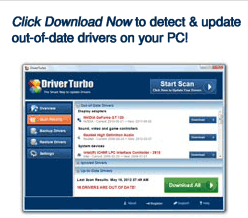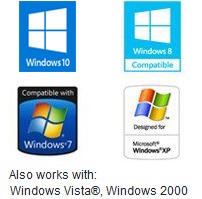Device drivers are there to perform a vital function in your computer. Information is being translated by these small programs and then conveyed between the hardware and software of your PC. They pose as relay stations within these parts which offer a mutual platform for information. The devices of your computer will not function properly without such drivers.
Although you may have drivers present in your computer, you may still face a few problems. If the drivers are outdated or corrupted they will create hardware malfunction, communication hazards and file errors in Windows. A few general problems may surface e.g. screen/video problems, printing malfunctions and sound malfunctions.
Corrupt device drivers may affect certain features individually, or may even cause a complete failure of a particular device. The operating system used by you should have a driver that matches it’s version for each such device.
A graphics driver that works well in Windows XP will either not match the Windows 7 version or will provide a poor performance through its various functions. Under most circumstances, the faulty driver won’t perform at all. Corrupted or outdated drivers may display a “blue screen” or cause a freezing display, glitches for certain programs, slow performance etc. You may follow a few good troubleshooting tips for your drivers.
Troubleshooting Tips for your Drivers
- Uninstall faulty drivers – you may need to overcome a few errors during installation. Once you re-install drivers you may get rid of such errors. You may open your device manager by running the command devmgnt.msc in order to check the drivers and get them uninstalled when required.
- Drivers should be updated – outdated drivers may often encourage glitches all along. Latest devices may also consider a few driver configurations as ‘obsolete’. Such problems can be resolved when you update your drivers.
- Windows should be updated – it might also pose a problem when your Windows version gets outdated and fails to live up to the programs that you use. Keep an eye on whether you need to update Windows.
- Keep an eye on wrong registry entries – the registry gets updated with driver’s configurations. If such updates are wrong, then your drivers may not perform well.
Driver maintenance is often a time-consuming and tedious task. You may do it a hassle-free way if you manually update software or get driver scanner.
Of course, you’ll always find it easier if you get a driver update software. Go through the reviews before you pick a driver update software, as this will save much of your invaluable time that you’d otherwise spend over your drivers.
When you surf the web, you’re bound to come across a few good review sites. Not all websites are good with their reviews. Some of them present a detailed account of various problems and their possible solutions.
Choose ones that depict impartial and thorough reviews for quite some time. This way, you’ll be able to handle your driver problems in an efficient manner. Solving your driver problems will ensure a smooth running of your computer system.



